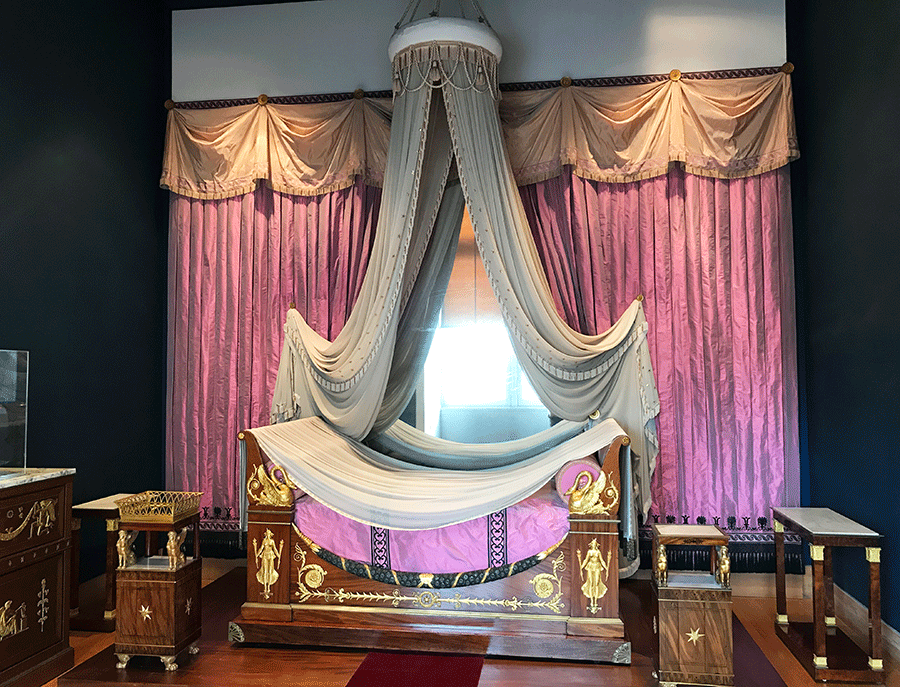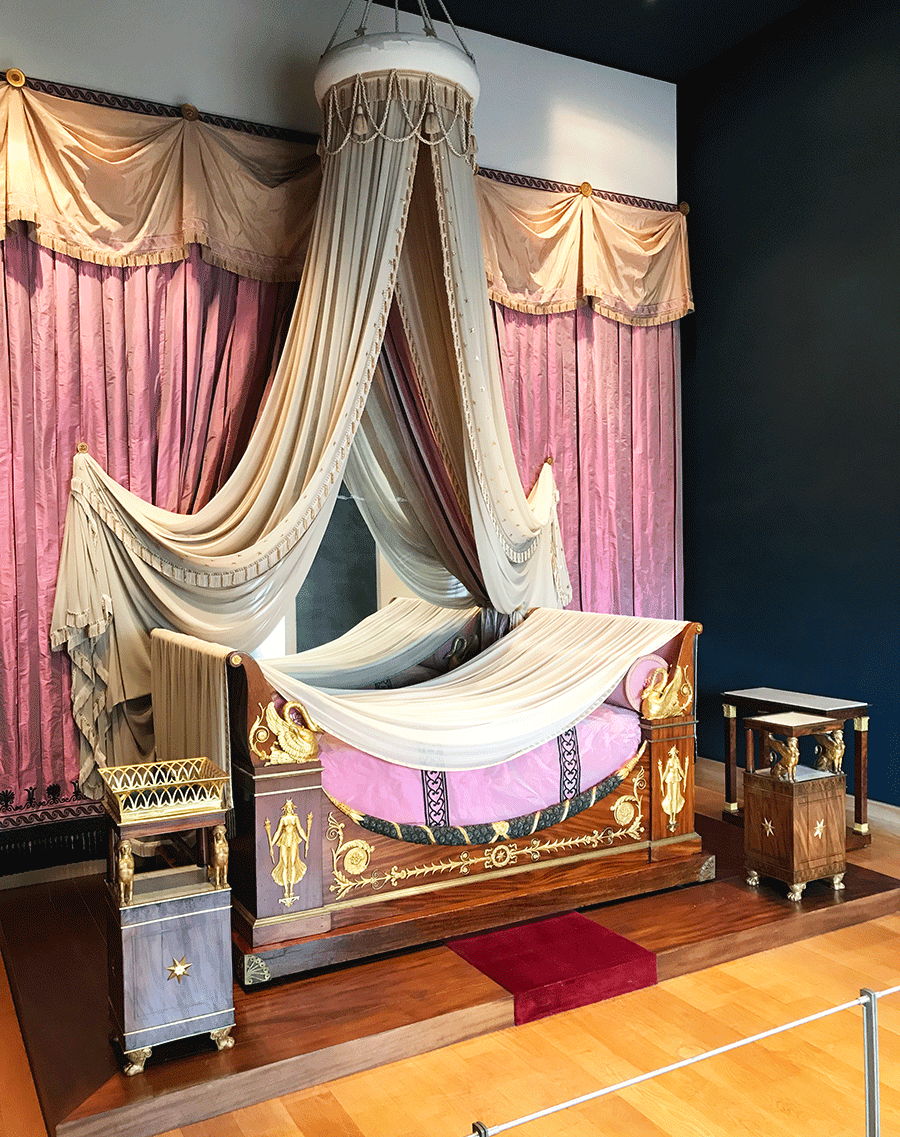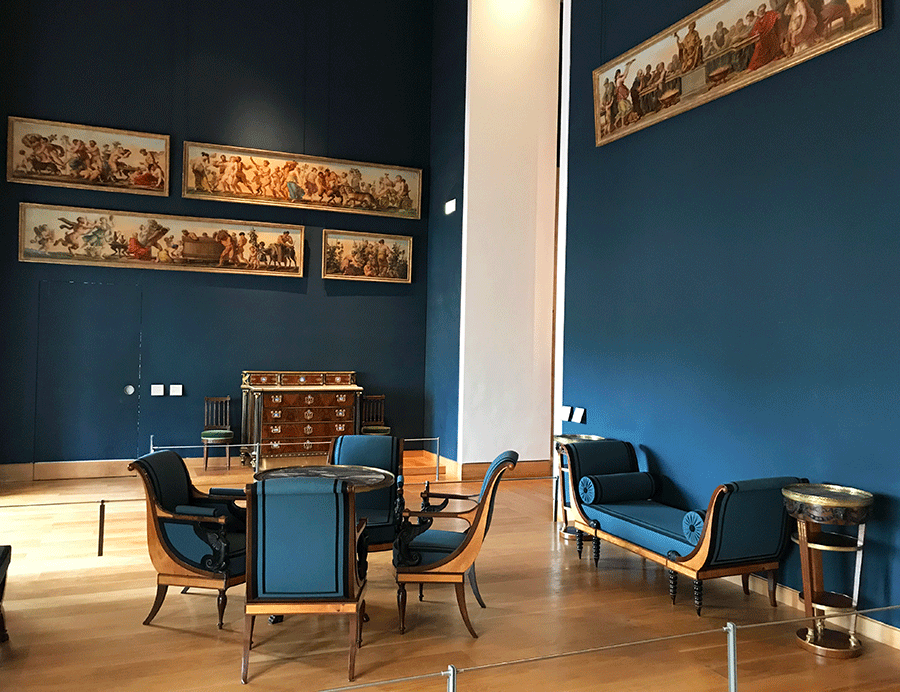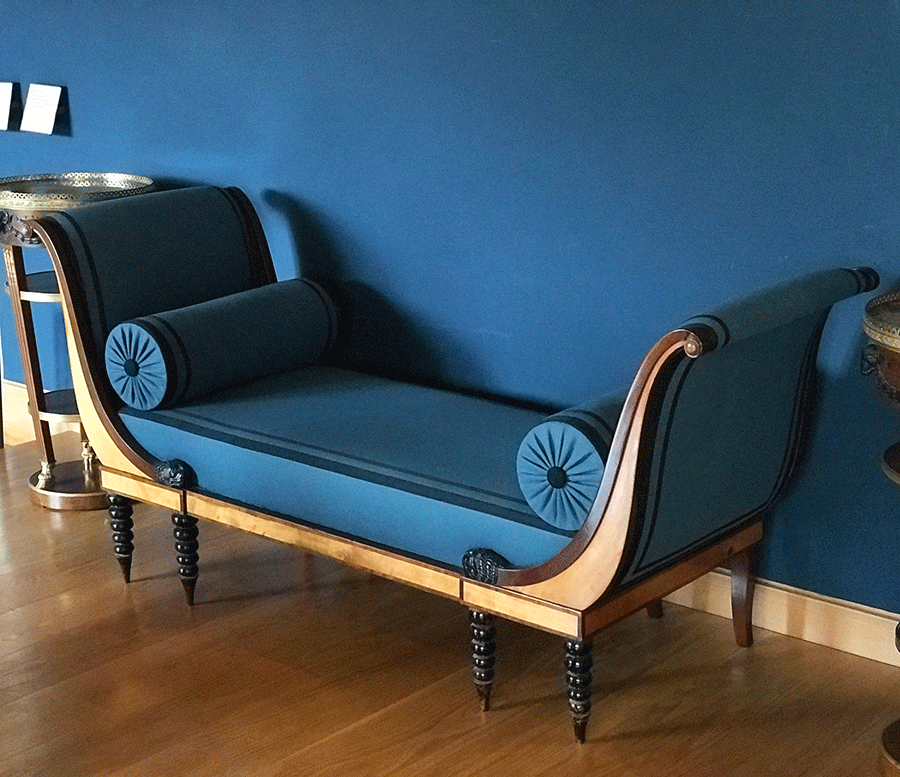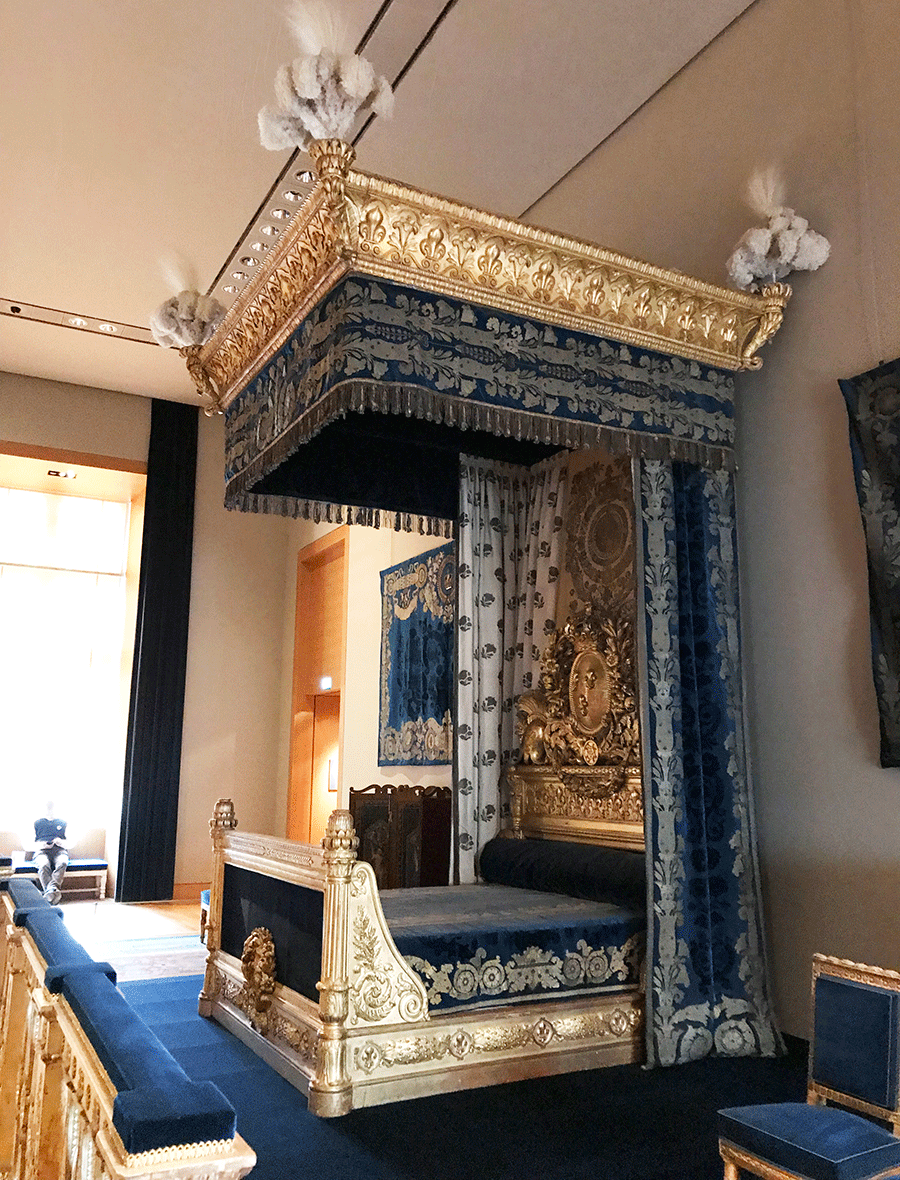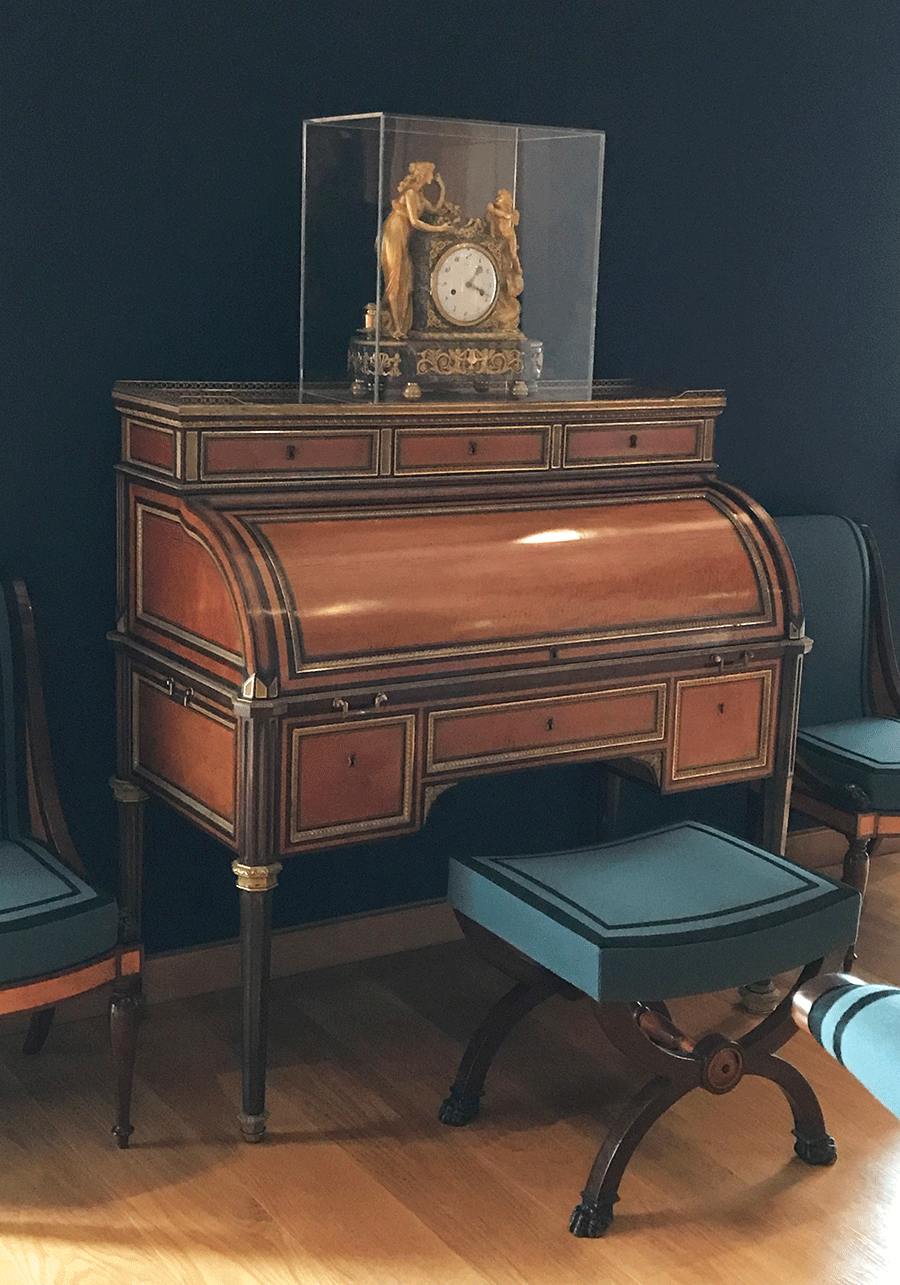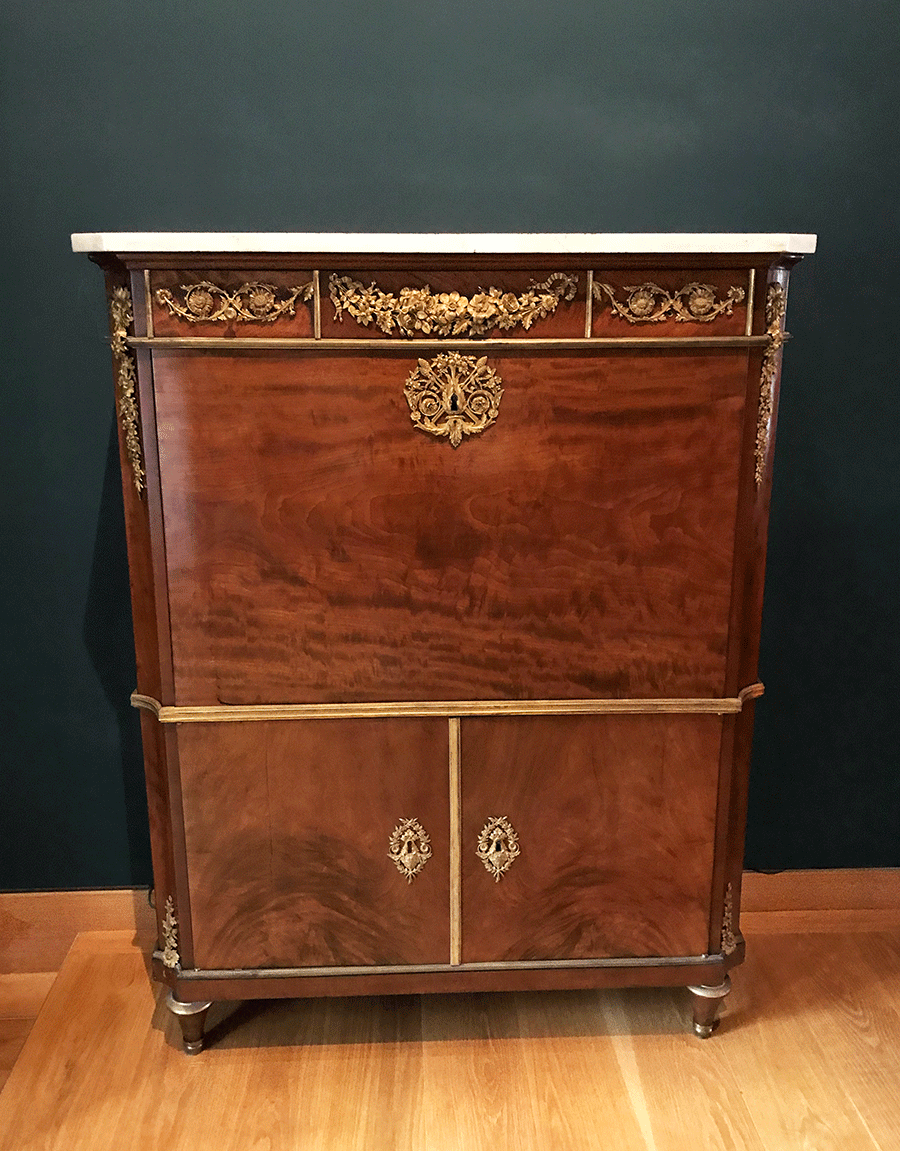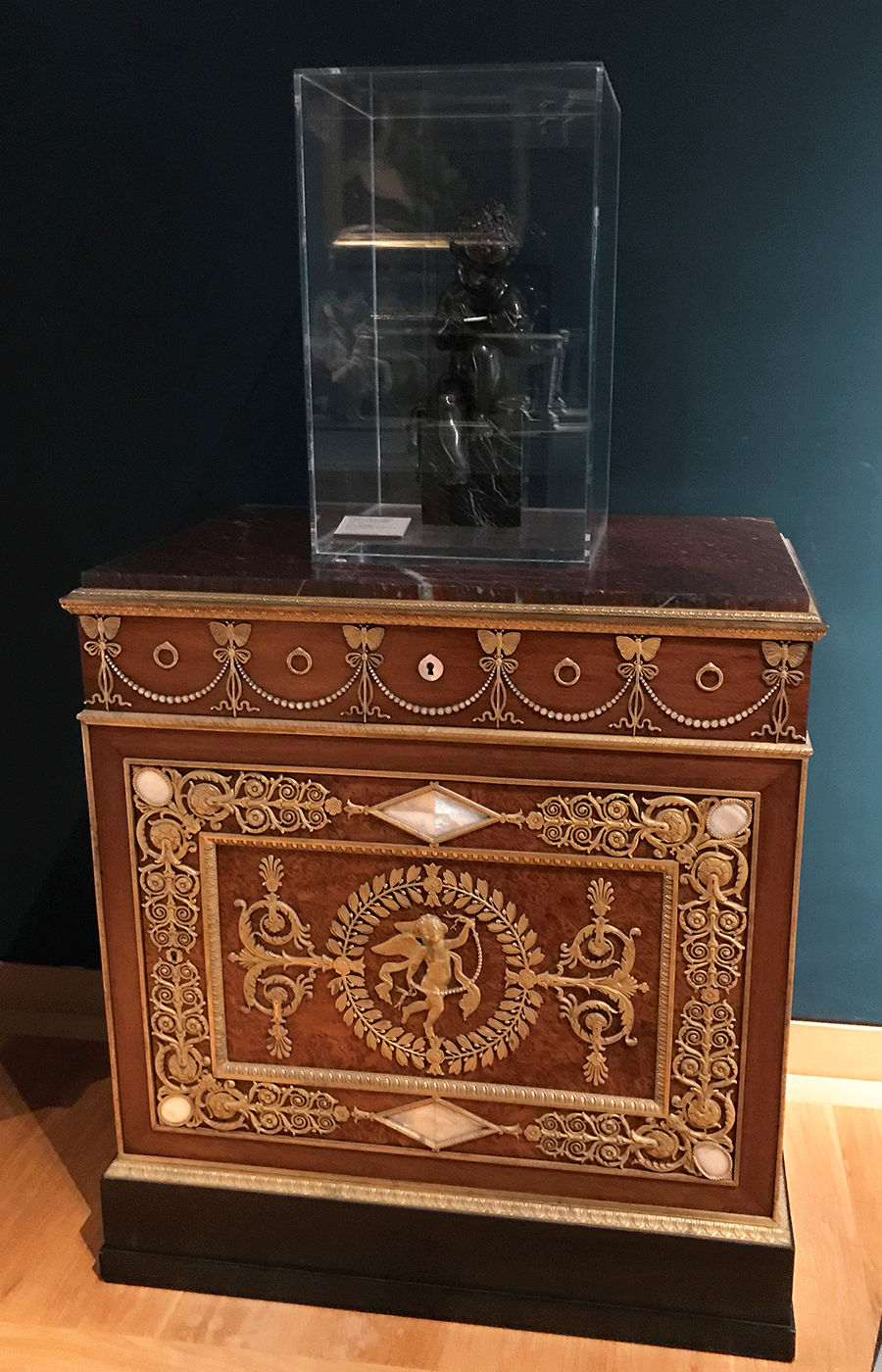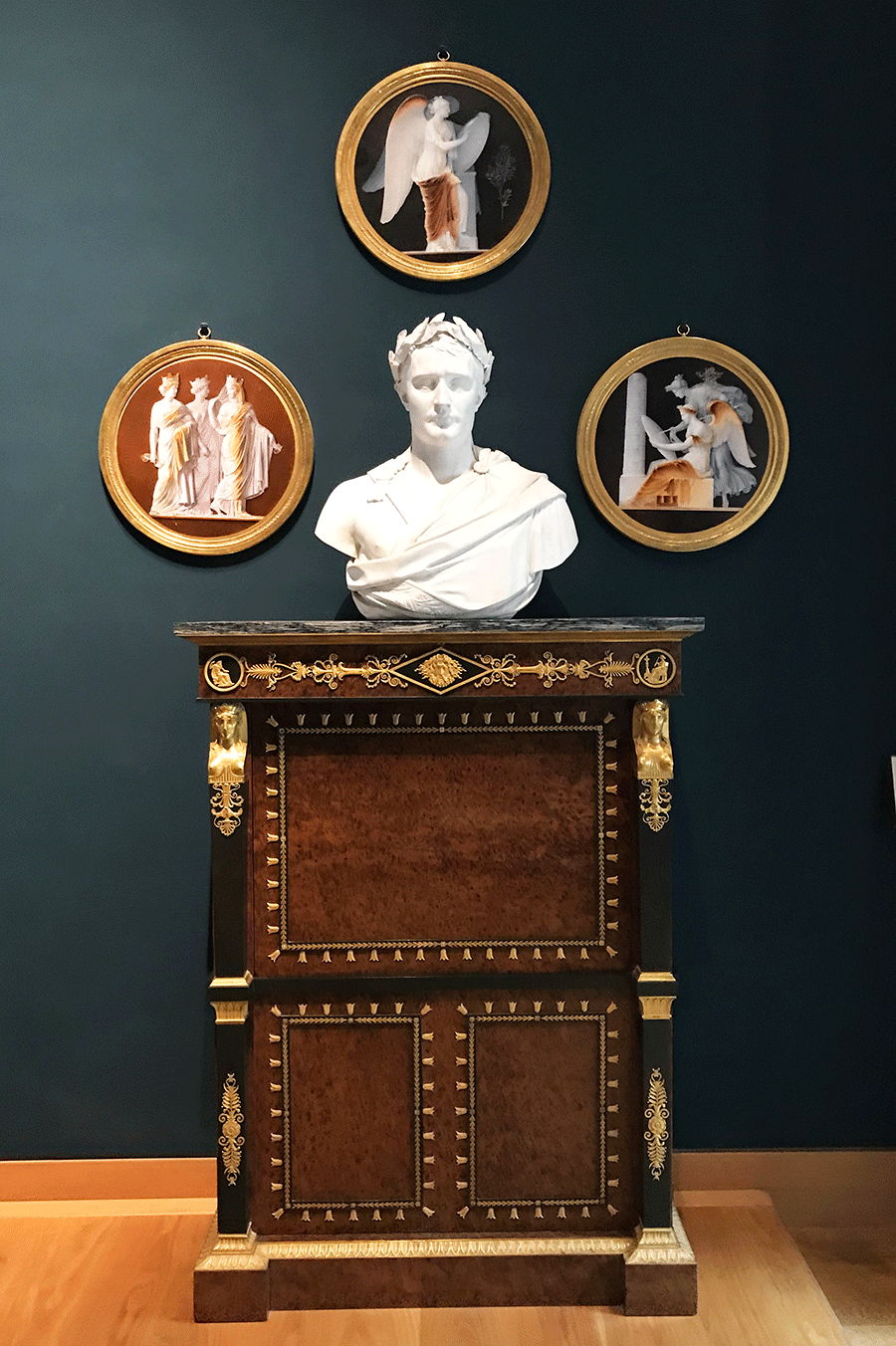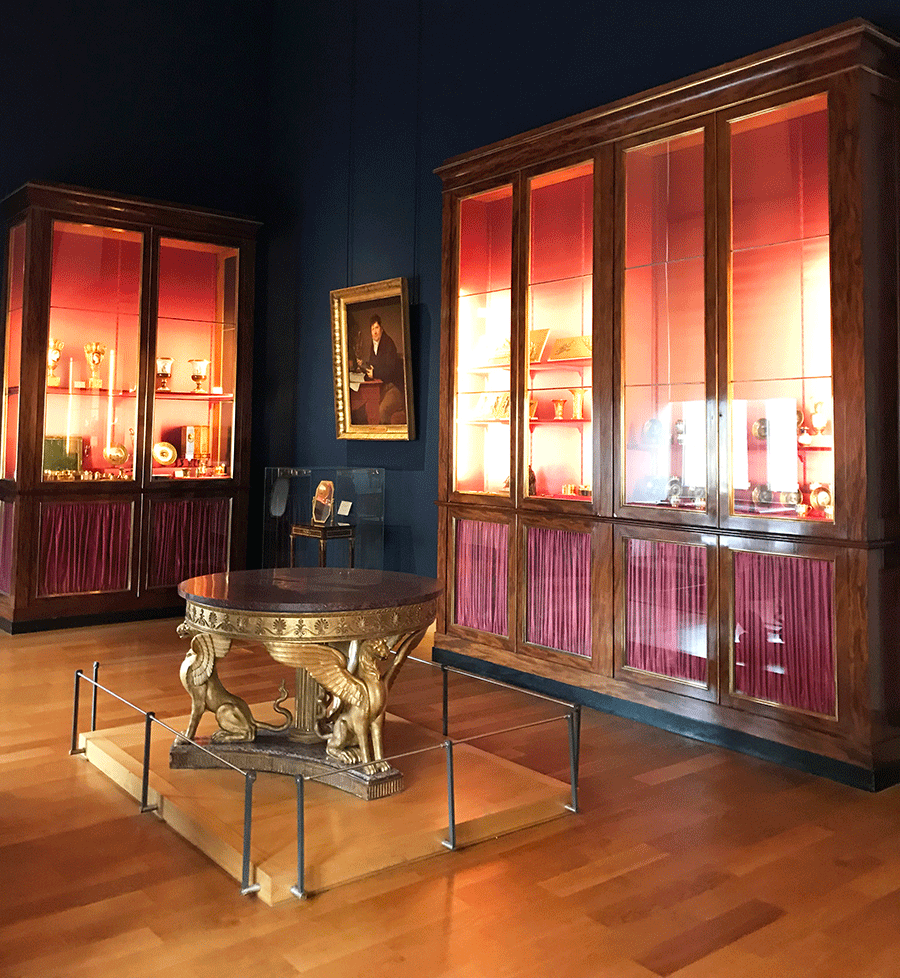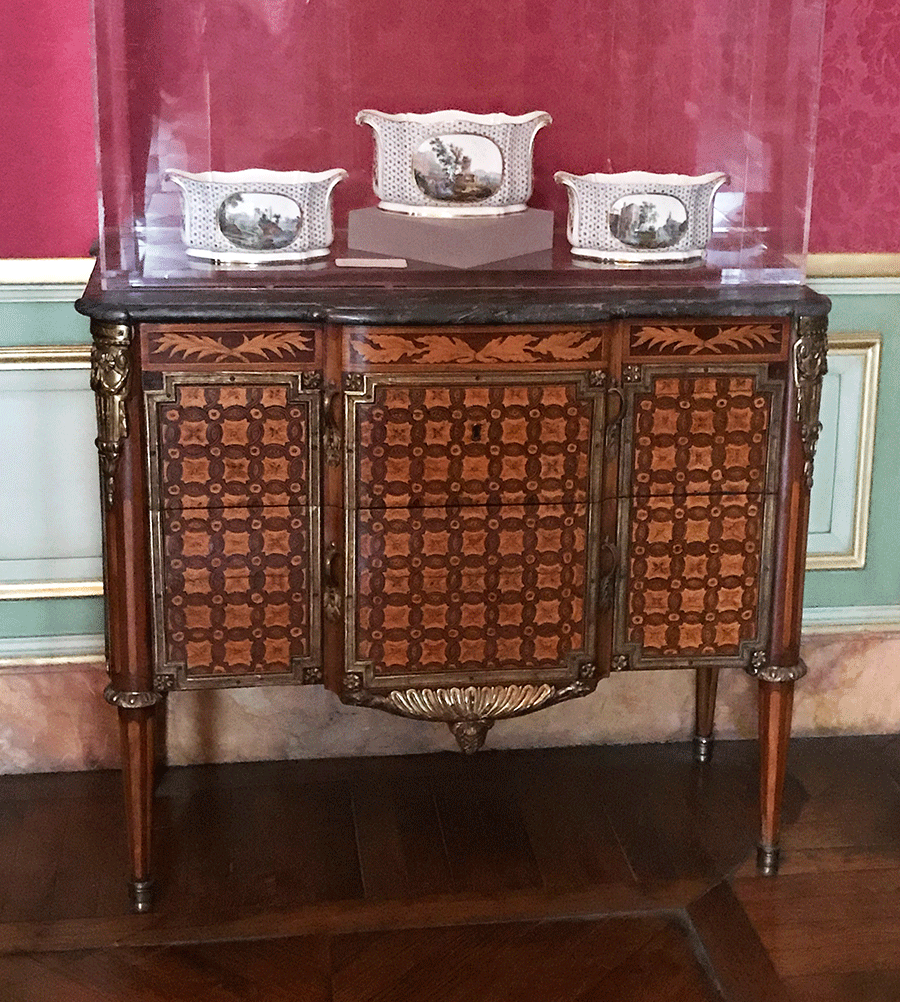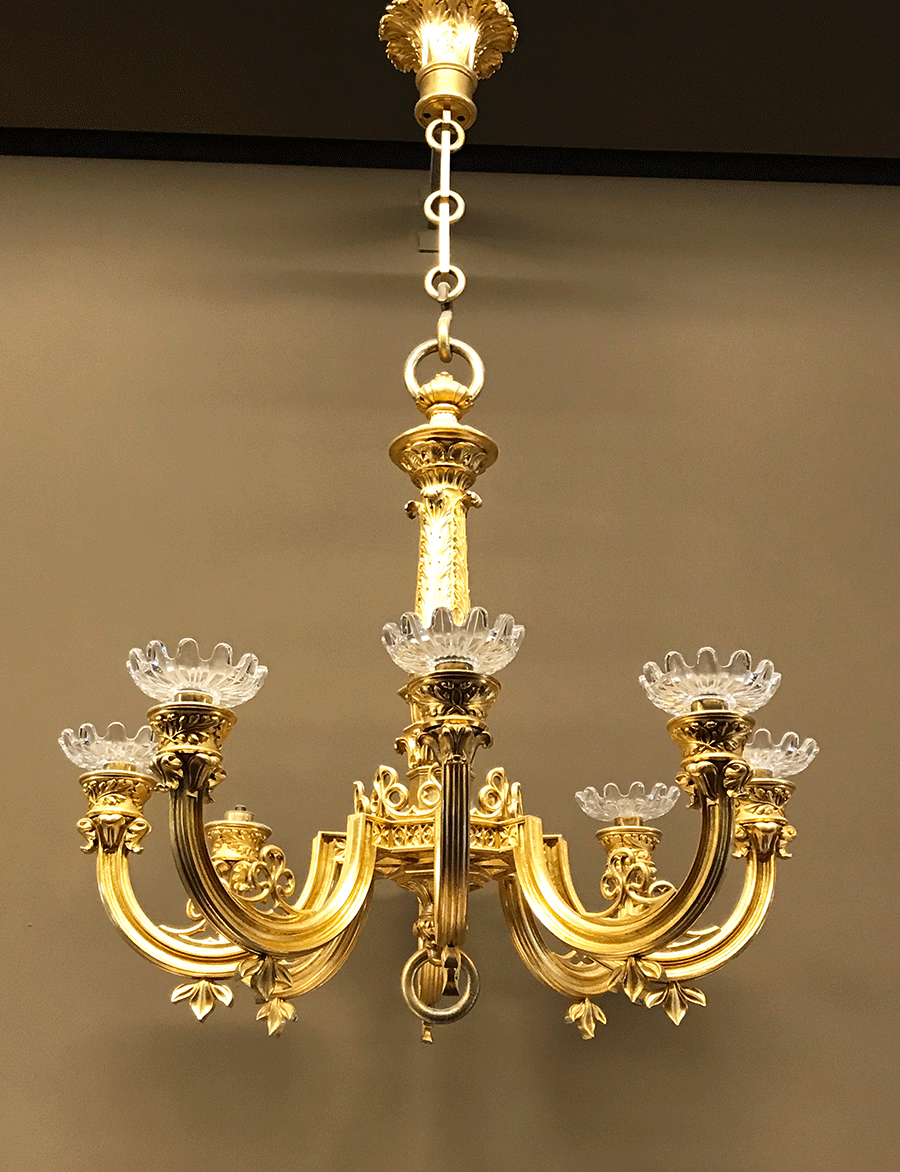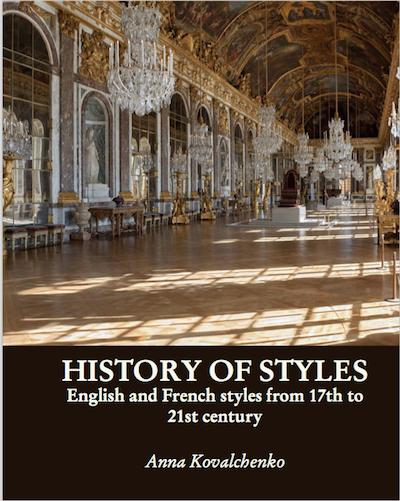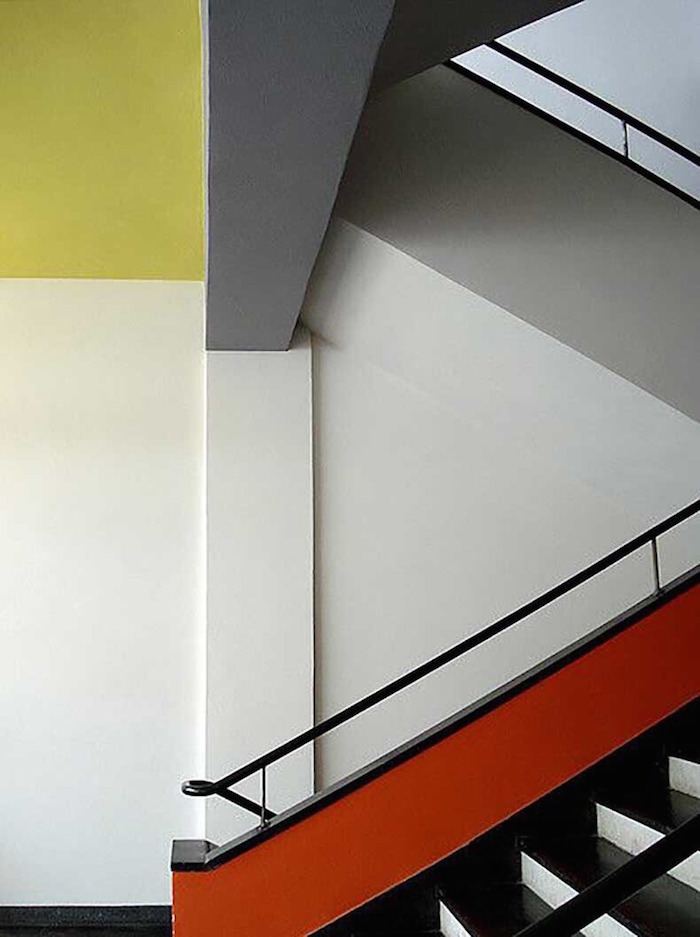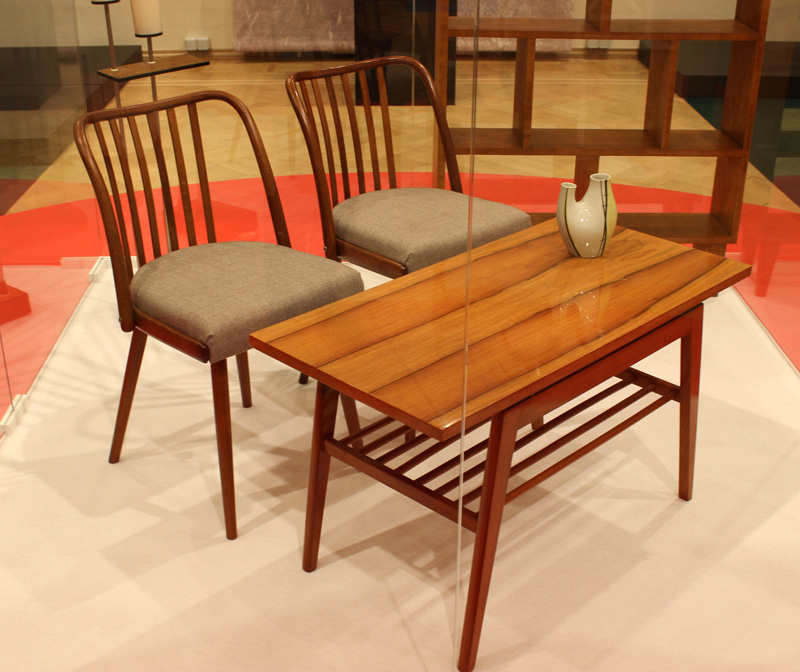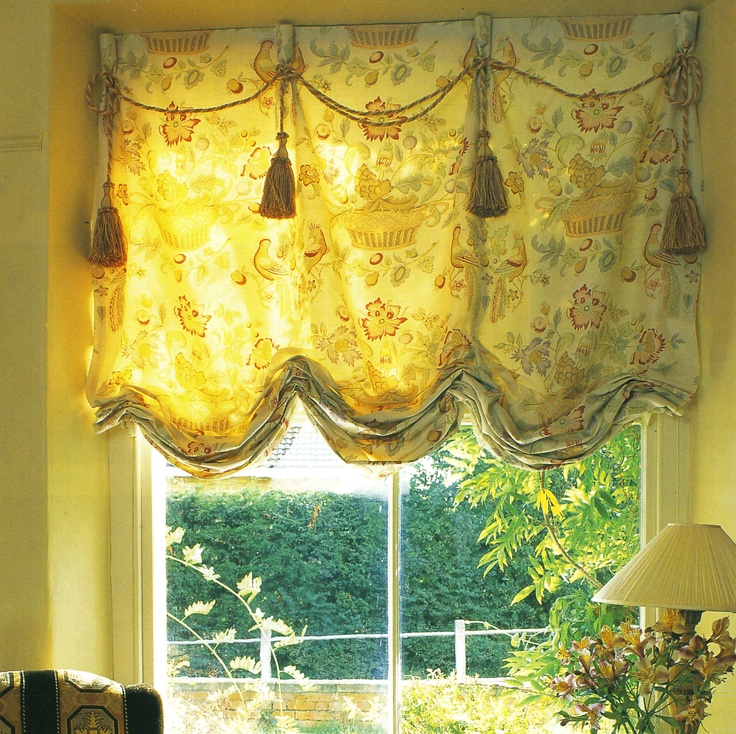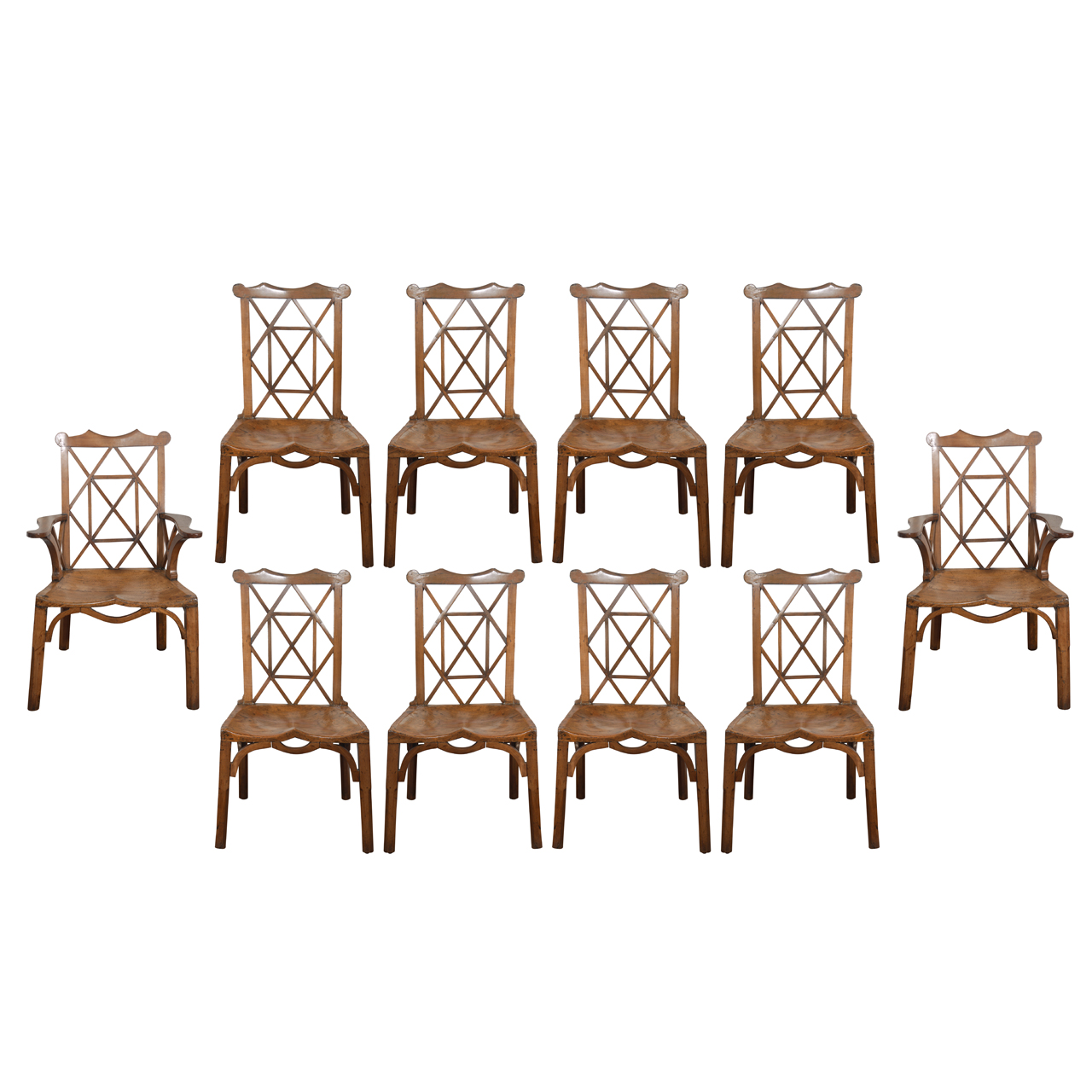History of Styles: Empire Style At a Glance
During my recent trip to Paris, I visited the Louvre where I collected plenty of interesting material for my History of Styles research. Particularly there were several great examples of Empire epoch interiors and furniture so in today’s post I want to share the main characteristics of this style.
Empire style appeared in the time of Napoleon Bonaparte and is still perceived as a symbol of success and power.
The Empire style expresses the ideology of the Napoleonic era. The emperor dreamed of uniting Europe and creating a huge national state like the Roman Empire. A new architectural and artistic style was required to express his aspirations.
At a glance
Many people confuse the Empire style with Classicism. These styles are really very similar, but there are essential differences too. Empire style excludes female elements in the interior, such as dressing tables, tables for needlework, ottomans, etc. The key characteristics of the Empire style are formality and greatness, grace and monumentality.
The discovery of Pompeii and Herculaneum cities played a great role in the formation of the Empire style. These events took place just on the eve of the Great French Revolution and the subsequent establishment of the Napoleonic Empire.
These excavations discovered the daily life of the ancient Romans as well as the interior decor, pieces of furniture, decorative wall paintings, lighting, etc. All this began to be imitated and copied in the Parisian salons in the time of Napoleon.
One of the characteristics of the Empire style that was inherited from the Roman Empire was strict symmetry. Another distinctive feature is the use of the same wood for all furniture pieces in the room. In bedrooms boat or sleigh beds appeared and became very popular.
Key elements
The walls were usually painted in intense, saturated colors – emerald green, burgundy, dark blue or covered with wallpaper with Greek, Roman or Egyptian patterns.
Fabrics
Muslin, colored silks, serge, merino wool, and damask. Frequent patterns included laurel leaves, wreaths, and swan motifs.
Animal motives
Another frequent feature of the Empire style is animal motives. Lions, eagles, and snakes, associated with courage, strength, and wisdom, were the most popular “Empire” animals. Their stylized heads and feet adorned the armrests and legs of the furniture, and the backs of chairs and sofas often had the shape of an eagle wing.
Materials
In 1801 architects Percier and Fontaine published the book “Empire Stylebook of Interior Design”, which served as a guide for furniture makers and decorators throughout Europe. French Empire furniture, as a rule, was made of mahogany adorned with bronze and marble decorations.
The laurel wreath is a universal symbol of triumph, victory and power. In the Empire style, it became one of the most used motifs:
Caryatids
Empire furniture often represented architecture in miniature: classic, symmetrical and rigid. And besides, it was decorated with such purely architectural details as columns and caryatids. Most of all table tops made during this era rest on their wooden or bronze shoulders.
Egyptian motifs
After Napoleon’s Egyptian campaign in 1797 everything related to Ancient Egypt became extremely fashionable in Europe. Accordingly, the furniture was covered with images of sphinxes, ibises and hieroglyphs.
Bee and swan
Architects Percier and Fontaine created for the Empire style a strict system of symbols: for example, a bee surrounded by a laurel wreath signified Napoleon, and a swan – Empress Josephine.
Palmette and acanthus
The two main Empire ornaments have different, but equally ancient origins. The classic acanthus, the decorative element in the shape of stylized leaves or stems of the acanthus, is an antique motif. A palmette, a fan-shaped ornament that resembles a palm leaf is a tribute to the Egyptian trend.
Lighting
Candles were still used for chandeliers, candelabras and wall sconces.
Want to learn more about various historic interior styles? Read my History of Styles ebook:

